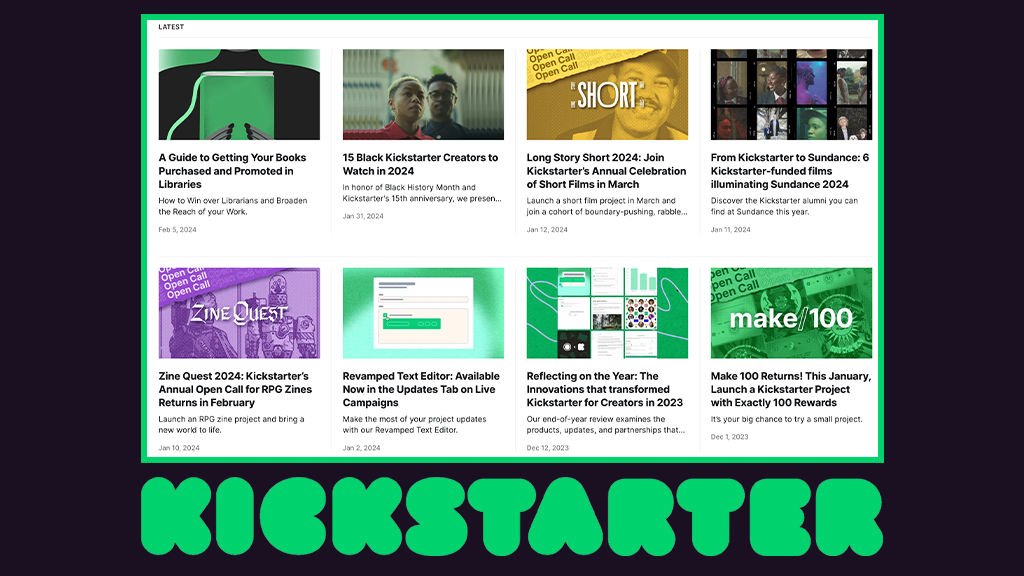
Kickstarter has become a go-to platform for entrepreneurs and creative individuals looking to bring their ideas to life. However, launching a successful campaign on Kickstarter requires a deep understanding of various metrics, including the average conversion rate. In this article, we will dive into the world of Kickstarter conversion rates, exploring their importance, factors affecting them, how to calculate them, and their impact on campaign success.
Contents
Understanding Conversion Rates
Conversion rate refers to the percentage of visitors to your Kickstarter campaign page who not only explore your project but also back it financially. In simple terms, it is the number of people who convert from being potential backers to actual contributors.
When it comes to crowdfunding, understanding and optimizing conversion rates is crucial for the success of your campaign. It is not enough to attract visitors to your campaign page; you need to convince them to take the next step and support your project financially. This is where conversion rate comes into play.
Defining Conversion Rate in Crowdfunding
Conversion rate is a metric that measures the effectiveness of your campaign in turning potential backers into actual contributors. It is calculated by dividing the number of people who back your project by the total number of visitors to your campaign page, and then multiplying the result by 100 to get a percentage.
For example, if your campaign page receives 1,000 visitors and 100 of them end up backing your project, then your conversion rate would be 10% (100/1,000 * 100).
Conversion rate is an important indicator of how well your project resonates with your target audience. A high conversion rate suggests that your campaign is compelling and persuasive, successfully capturing the interest and trust of potential backers. On the other hand, a low conversion rate indicates that there may be issues with your campaign that need to be addressed in order to attract more backers.
Importance of Conversion Rate in Kickstarter Campaigns
Conversion rate plays a crucial role in the success of Kickstarter campaigns. It provides valuable insights into the effectiveness of your campaign strategy, messaging, and overall appeal to potential backers.
By monitoring and analyzing your conversion rate, you can identify areas of improvement and make necessary adjustments to maximize your chances of success. For instance, if you notice a low conversion rate, it may indicate that your project description or rewards structure needs to be revised to better align with the expectations and desires of your target audience.
Furthermore, conversion rate can help you gauge the impact of external factors on your campaign’s performance. For example, if you run a marketing campaign or receive media coverage, you can track the changes in your conversion rate to determine the effectiveness of these external influences.
Ultimately, a high conversion rate is a positive sign that your campaign is resonating with potential backers and has a higher likelihood of reaching its funding goal. It indicates that you have successfully communicated the value and uniqueness of your project, instilling confidence and motivating people to support your vision.
However, it is important to note that conversion rate is just one piece of the puzzle. While a high conversion rate is desirable, it does not guarantee success on its own. Other factors such as the quality of your project, the competitiveness of your rewards, and the overall market demand for your idea also play significant roles in determining the outcome of your Kickstarter campaign.
Factors Affecting Conversion Rates
Quality of the Project
One of the most significant factors influencing your conversion rate is the quality of your project. Backers are more likely to support campaigns that demonstrate authenticity, innovation, and a well-developed plan. By ensuring that your project is of high quality, you can increase the likelihood of converting visitors into backers.
Marketing and Promotion Strategies
Effective marketing and promotion strategies play a crucial role in improving your conversion rate. Utilize social media, email newsletters, and targeted advertisements to reach your target audience and create a buzz around your project. By employing these strategies, you can attract more potential backers and increase conversions.
The Role of Social Proof
Social proof, such as positive reviews and testimonials from previous backers, can significantly impact your conversion rate. When potential backers see that others have supported your project and had a positive experience, they are more likely to convert. Encourage satisfied backers to share their experiences to build social proof and increase conversions.
Calculating the Average Conversion Rate
Methodology for Calculating Conversion Rate
Calculating the conversion rate is relatively straightforward. Divide the number of backers by the total number of unique visitors to your Kickstarter campaign page. Multiply the result by 100 to get the conversion rate as a percentage. For example, if you have 200 backers and 1000 unique visitors, your conversion rate would be 20% (200/1000 x 100).
Interpreting the Average Conversion Rate
While there is no universal benchmark for a “good” conversion rate, a typical average conversion rate in the crowdfunding industry hovers around 10%. However, keep in mind that conversion rates can vary depending on factors such as the type of project, target audience, and campaign visibility. Interpreting the average conversion rate requires considering these factors and comparing your project’s performance to similar campaigns.
Improving Your Kickstarter Conversion Rate
Effective Communication with Followers
Clear and concise communication with your followers is essential for improving your conversion rate. Regularly update your project page, respond to backer comments and questions promptly, and provide transparent information about your project’s progress. By establishing trust and fostering a sense of community, you can encourage more backers to convert.
Offering Attractive Rewards
One surefire way to increase your conversion rate is by offering enticing rewards to potential backers. Create reward tiers that cater to different budgets and interests, ensuring that each tier offers value and unique benefits. By crafting appealing rewards, you can motivate more visitors to back your project and convert into loyal supporters.
Utilizing Analytics for Improvement
Leveraging analytics tools can provide valuable insights into user behavior and campaign performance. Pay close attention to data such as visitor demographics, traffic sources, and conversion funnel analysis. By identifying trends and patterns, you can make data-driven decisions to optimize your campaign and improve your conversion rate.
The Impact of Conversion Rates on Campaign Success
Correlation Between Conversion Rate and Funding Success
A high conversion rate positively correlates with increased funding success on Kickstarter. When potential backers see a high conversion rate, they are more likely to have confidence in your project’s viability and are more inclined to contribute. Additionally, a high conversion rate can attract attention from Kickstarter’s algorithm, potentially leading to more visibility and organic support.
Long-term Effects of High Conversion Rates
Furthermore, high conversion rates can have long-term benefits beyond the duration of your Kickstarter campaign. A successful campaign builds a loyal community of backers who can continue to support your project even after the campaign ends. The goodwill generated by a high conversion rate can translate into word-of-mouth recommendations, increased brand reputation, and potential opportunities for future funding.
In conclusion, understanding and optimizing your Kickstarter conversion rate is essential for achieving success on the platform. By focusing on quality, utilizing effective marketing strategies, and leveraging social proof, you can improve your conversion rate and increase your chances of funding success. Remember to regularly assess and adapt your approach based on analytics data, and nurture your community of backers to maintain long-term support. With these strategies in place, you’ll be well on your way to achieving your crowdfunding goals.



